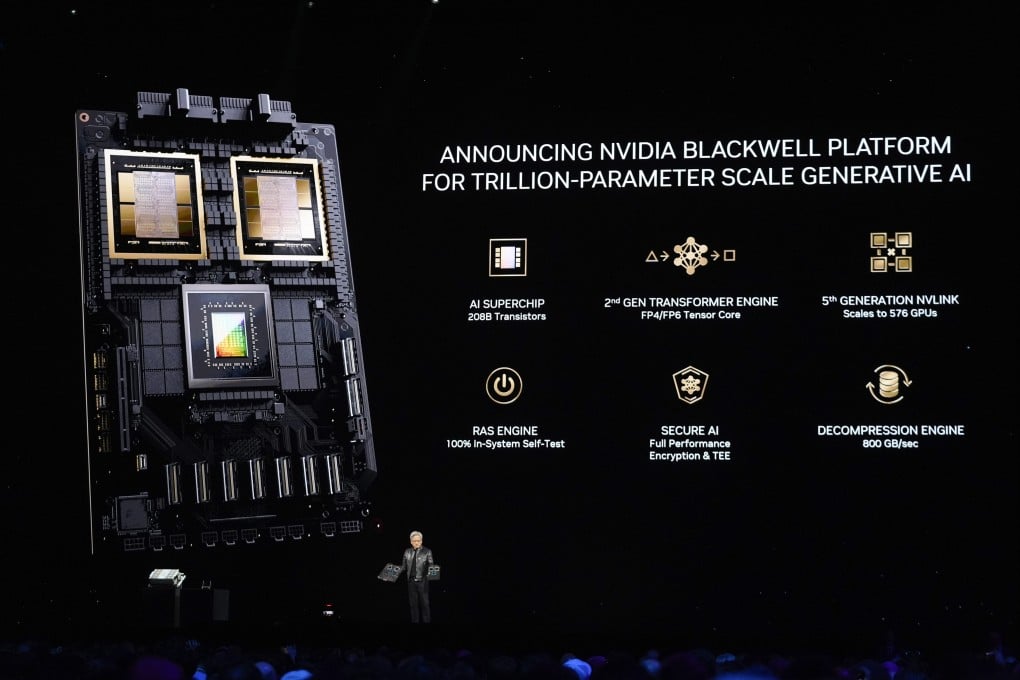Nvidia unveils new AI ‘superchip’ line-up Blackwell, succeeding dominant H100 chip banned from sale to China
- The new Blackwell chips are made up of 208 billion transistors and will be able to link with other chips, making them much faster at handling AI models
- The chips will be the basis of new computers coming from data centre operators like Amazon.com, Microsoft and Google

A new processor design called Blackwell is multiple times faster at handling the models that underpin AI, the company said at its GTC conference in San Jose, California. That includes the process of developing the technology – a stage known as training – and the running of it, which is called inference.
Blackwell – named after David Blackwell, the first Black scholar inducted into the National Academy of Science – has a tough act to follow. Its predecessor, Hopper, fuelled explosive sales at Nvidia by building up the field of AI accelerator chips. The flagship product from that line-up, the H100, has become one of the most prized commodities in the tech world – fetching tens of thousands of dollars per chip.
The growth has sent Nvidia’s valuation soaring as well. It is the first chip maker to have a market capitalisation of more than US$2 trillion and trails only Microsoft and Apple overall.
The announcement of new chips was widely anticipated, and Nvidia’s stock is up 79 per cent this year through Monday’s close. That made it hard for the presentation’s details to impress investors, who sent the shares down about 1 per cent in extended trading.
Huang, Nvidia’s co-founder, said AI is the driving force in a fundamental change in the economy and that Blackwell chips are “the engine to power this new industrial revolution”.
Nvidia is “working with the most dynamic companies in the world, we will realise the promise of AI for every industry”, he said at Monday’s conference, the company’s first in-person event since the pandemic.